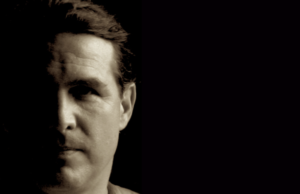Opening Up: Pieces of the lockdown
An exhibition of pandemic life by Françoise Miquelis
Mark Jacobs
Cook, Activist
October 2020
The powerful studio exhibition, “S’ouvrir : pièces de confinement” by Françoise Miquelis, brings a clear-eyed, open-hearted lucidity to the trauma – and the loneliness – of 2020. Her work distills and articulates the subtleties of a rampant pandemic, in which social connection is both the vector and dominant casualty of infection. She does this not only through the deft realization of sculptural pieces that perfectly contextualize the global suffering within the now achingly familiar, achingly surreal “covid metaphysics” of a waking dream, but also through the process-driven, performative aspect of the creation and presentation of this fine work.
The show takes place within the “confinement” of Ms. Miquelis’s studio – the space she inhabited in solitude, for months on-end – as notions like “quarantine”, “social distancing”, “lockdown”, and “isolation” came to define the operative geographies of our liberty. This work is, in the truest sense of the hackneyed art term, site specific: made in this place and of the experience of this place. There is, of course, powerful irony in the fact that the work was produced, just as one would ordinarily expect, in her workshop. The studio takes on different implications when it is a place of captivity. The freedom of Ms. Miquelis’s work tells us that her atelier remained a haven of creative escape; and yet, the ubiquitous references to exteriority, in even the most introspective pieces, make clear it was a carceral cell in many respects.
Any decision about where to begin taking-in the work is short-circuited by the utterly arresting, gossamer sculpture entitled “Breathe”, disembodied, abstracted, deconstructed lungs which, no longer capable of commanding and controlling the flow of air, float at the mercy of the air. This sense of objects – and words, lives, emotions, human relationships – tossed and blown by invisible forces beyond our control, or even our perception, is a motif carrying through this exhibition.
This sense of unbearable lightness is presented with haunting elegance in the pendant-like “Y’a quelqu’un” (“Someone There”). The slender structure perfectly conveys a perspective of distance, even within the relatively confined space of the studio exhibition, and speaks to our unprecedented social detachment. Life as seen from the windows of our domestic isolation, into the windows of our neighbours’, is an unblinking Morse signal lamp, communicating little more than presence; but there is both beauty and fragility in this simple message.
As a visitor settles into the studio, they will likely become conscious of the oddly variegated soundtrack playing in the background. It soon becomes plain that the music was not compiled with one’s viewing of the work in mind; it represents the ad hoc playlist filling this space during the countless hours while the work was imagined and made. It creates a bridge between presentation and creation, rooting the work in place while uprooting the visitor in time.
The hyperreal unreality of the moment is given additional depth in two literary pieces, Ms. Miquelis’s recitation of the lockdown writing of her long-time friend and collaborator, Jérôme Descamps, and in “Nos Mots” (“Our Words”), a calligraphic panel in which Ms. Miquelis relates her own experience of illness. With a disjointed literalism and free-flowing inscription, the text exquisitely negotiates the perception- altering qualities of both the malady and the resulting social estrangement.
Three of the pieces in the exhibition address the ubiquity of PPE – personal protective equipment – which now mediate every human interaction. The skeletal rendering of the face mask in “Masque” strips away any illusion of security, both by denying the object what little heft it might otherwise have, and by referencing morbidity in such explicit, primal terms. By contrast, the idea of defensive sheathing takes-on a burqa- like opacity when applied to the sadly whimsical depiction of swaddled communications in “Conversation”.
The weightiest piece in the show, “Hic et Nunc” (“Here and Now”) is the one that reminds us that, if the pandemic doesn’t necessarily represent a “new normal”, it will remain our present reality for quite some time. It pairs the TikTok video of a doctor dawning their elaborate PPE with a glove, stained blue on the palm and finger surfaces by Chinese ink. The glove is not the iconic latex of the medical profession, however; it is the heavy leather foundry glove of the sculptor – the now-infected tool of the artist herself.

